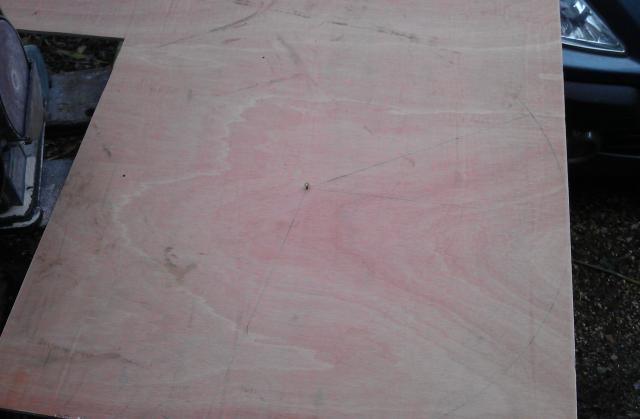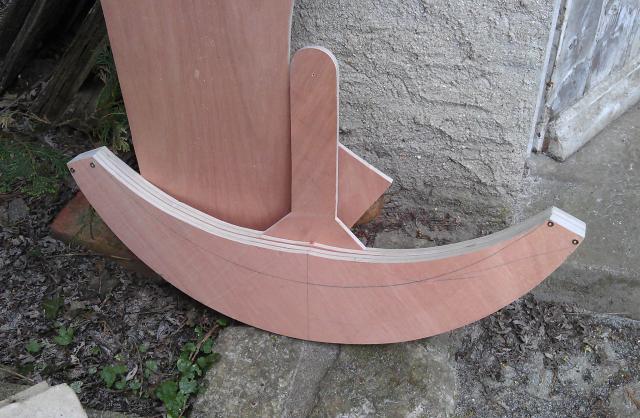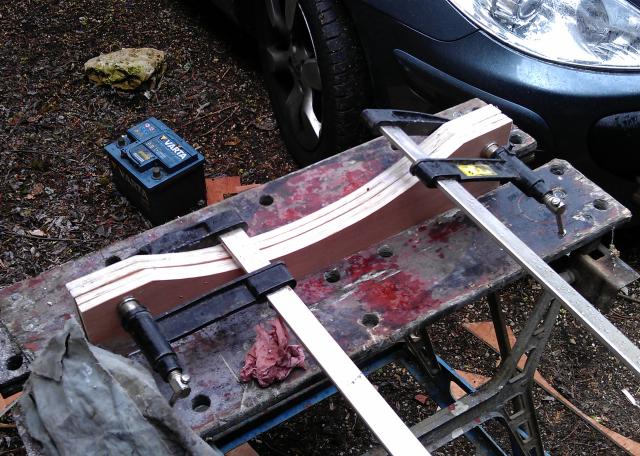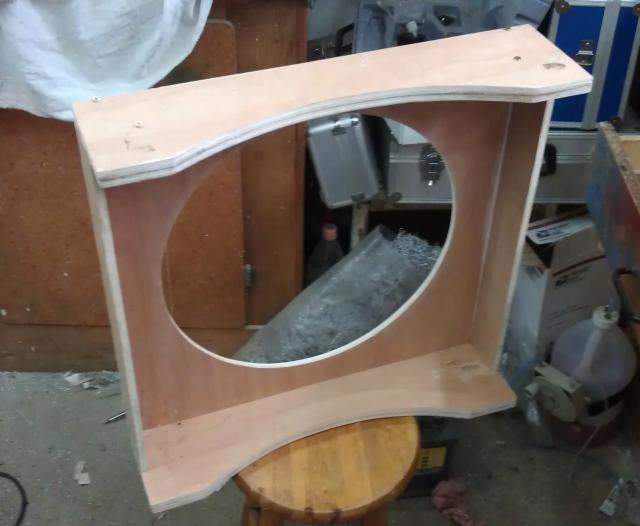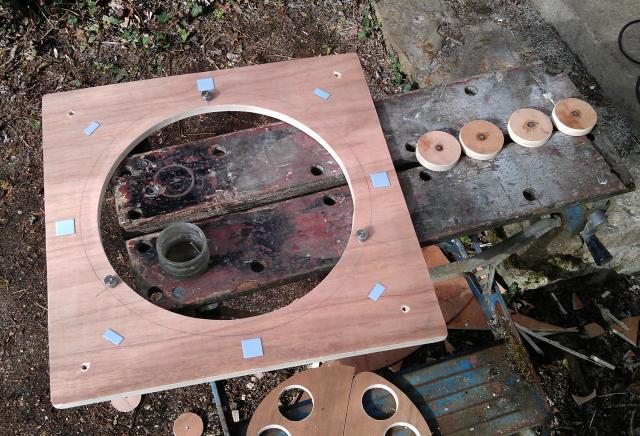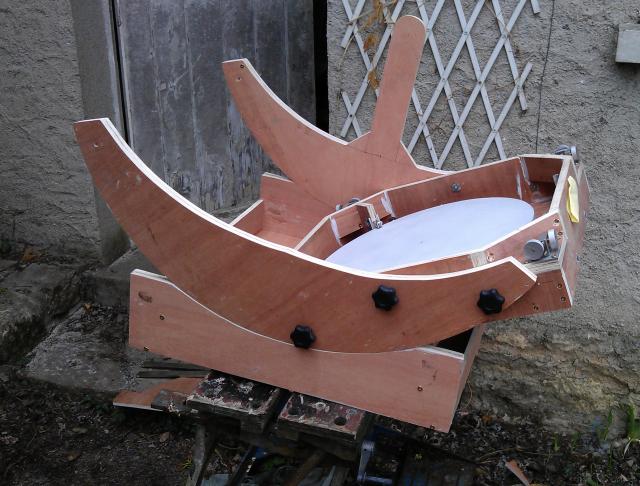400 mm telescope building |
available in multiple languages : |
 |
 |
|
Rocker & Base
The rocker is a common alt-azimutal design, but with oversized bearings (400 mm radius). This design allow to reach the center of gravity and align it with the center of rotation, even with the use of heavy eyepiecesà. It also allows to build an extra slim base, while maintaining the primary case near the ground (with the eyepiece being at man height level when the scope is pointing to the zenith). This is is the "modern" Dobson design which is used on most current telescope buildings..
Altitude rotation
The altitude bearings that will be attached to the primary case are cut after drawing using a string, from the rotation center. They are 20 mm thick (2 x 10 mm plywood), in order to maintain the shape and rigidity over time.
Then they are cut with a jigsaw, mounted together then sanded, corrected and drilled, so that they will be the same, ensuring a square alignment of the rocker.
The "lower" part of the rocker follows the same principle.
The base is made as simple as possible. The azimut movement retains the "ring" design, without any central pivot point, which facilitates mounting and properly maintains the rocker on its base.
Azimut rotation
I initialy made a triangular base, but first attempts to use the scope showed unstability. I then made another set, square based, with four "adjustable" feet so the telescope can be levelled in rough surfaces. This is much more stable. The base houses the rocker on teflon pads.
The centering is provided by 3 ball bearings, giving a fluid rotation of the system.
Finally, the rocker is assembled onto the primary case, to check for curvature alignment of the bearings. I kept some piece of wood on one bearing if I ever wish to use graduated circle or a pointing system (we never know :-) ).
Note that my altitude bearings are rather "short" and don't allow to go down to 0° (I am limited to about 20°). Practically, around relief and turbulence make these lower altitude unusable anyway.
After initial tries, I modified the rocker by adding Delrin pads, greatly enhancing the bearing slip. A brace is eventually added between the bearings, bringing added stiffness to the whole assembly, and improving the squaring. This especially avoids the rocker from getting "out of way" at lower altitudes (30° or below).
Next : Structure assembly
retour en haut | retour à l'accueil
| 
